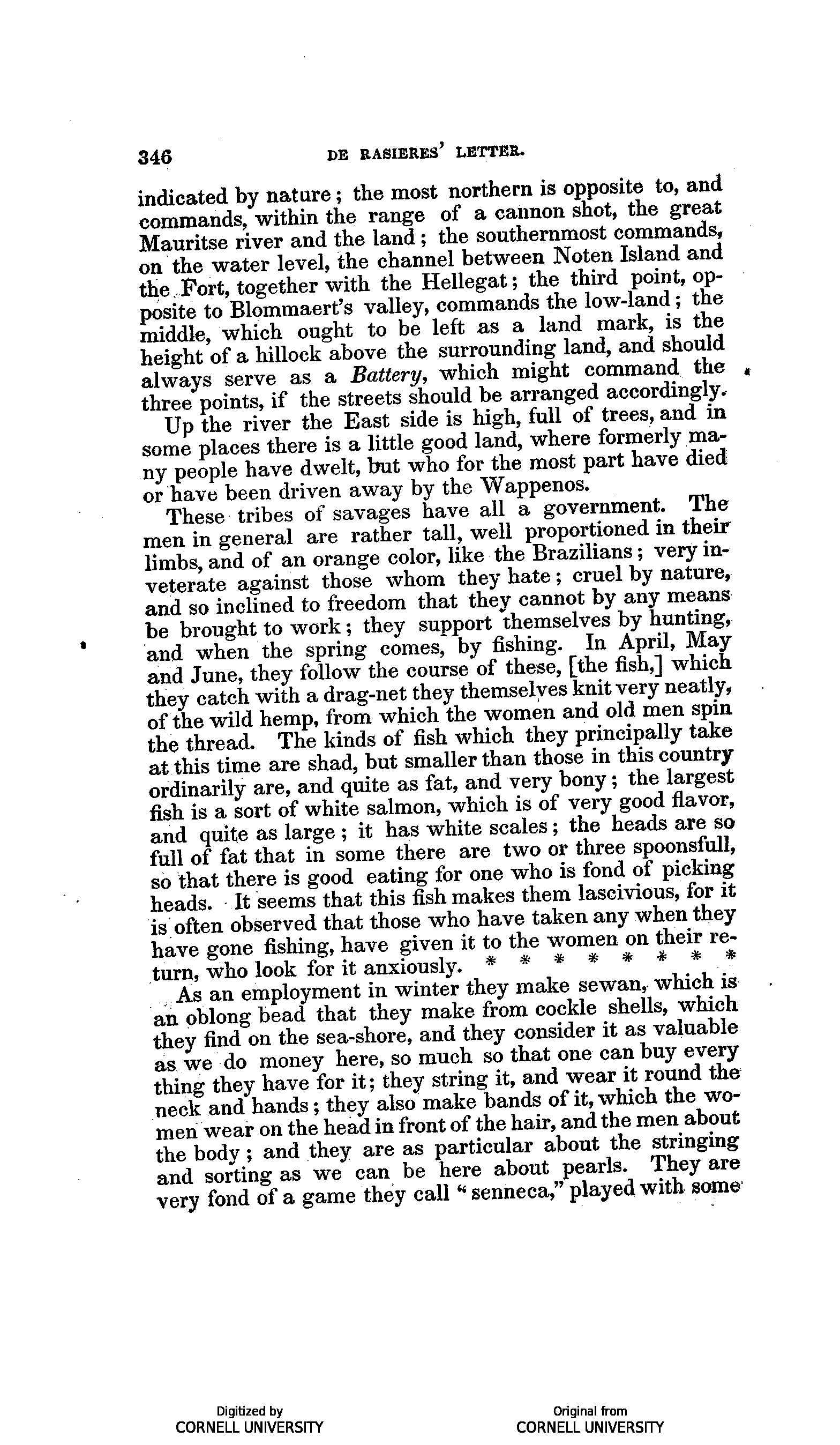The river marks out, naturally, three angles; the most northern faces and commands, within the range of a cannon shot, the great Mauritius River and the land; the southernmost commands, on the water level, the channel between Noten Island and the fort, together with the Hellgate; the third point, opposite to Blommaert’s Valley, commands the lowland. The middle part, which ought to be left as a market-place, is a hillock, higher than the surrounding land, and should always serve as a battery, which might command the three points, if the streets should be arranged accordingly. Up the river the east side is high, full of trees, and in some places there is a little good land, where formerly many people have dwelt, but who for the most part have died or have been driven away by the Wappenos. These tribes of savages all have a government. The men in general are rather tall, well proportioned in their limbs, and of an orange color, like the Brazilians; very inveterate against those whom they hate; cruel by nature, and so inclined to freedom that they cannot by any means be brought to work. They support themselves by hunting, and when the spring comes, by fishing. In April, May and June, they follow the course of these, which they catch with a drag-net they themselves knit very neatly, of the wild hemp, from which the women and old men spin the thread. The kinds of fish which they principally take at this time are shad, but smaller than those in this country ordinarily are, though quite as fat, and very bony; the largest fish is a sort of white salmon, which is of very good flavor, and quite as large; it has white scales; the heads are so full of fat that in some there are two or three spoonfuls, so that there is good eating for one who is fond of picking heads. It seems that this fish makes them lascivious, for it is often observed that those who have caught any when they have gone fishing, have given them, on their return, to the women, who look for them anxiously. Our people give the same report; it is the same with them when they eat a great deal at one time, as can be shown by the shirts.
As an employment in winter they make sewan, which is an oblong bead that they make from cockle-shells, which they find on the sea-shore, and they consider it as valuable as we do money here, since one can buy with it everything they have. They string it, and wear it around the neck and hands; they also make bands of it, which the women wear on the forehead under the hair, and the men around the body; and they are as particular about the stringing and sorting as we can be here about pearls. They are very fond of a game they call Senneca, played with some


